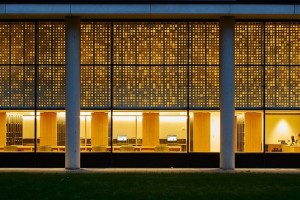There is more focus than ever before on caring for the environment. As a result, people are thinking about new ways to do various things including disposing of waste. An interesting concept here is Zero Waste. It focuses on reducing how much we discard, instead looking at ways to reuse the resources. But, how can we apply this to a whole city? We want to look at that today, including how changes to homes and commercial architecture, as well as the use of new tech and collection methods, can help.
A new way to do things
 Traditionally, the approach to handling waste is collection and disposal. Households and businesses collect it in bins and then put them out for waste collection services. Then, trucks come around to remove it, taking the waste for disposal. In the past it would all go to landfill or incinerators. Now, there is more work on sorting and careful management, but we need to go further.
Traditionally, the approach to handling waste is collection and disposal. Households and businesses collect it in bins and then put them out for waste collection services. Then, trucks come around to remove it, taking the waste for disposal. In the past it would all go to landfill or incinerators. Now, there is more work on sorting and careful management, but we need to go further.
The Zero Waste approach doesn’t just throw everything together for collection services to deal with. Instead, careful sorting and segregation allows more effective use of the materials. They can go for recycling or other uses. Food waste can go to become compost or to generate energy. Any waste here that doesn’t have an end use is seen as a flaw in the design.
What to do?
The crucial thing with Zero Waste is to get the design right and ensure systems and processes are in place. They need to be there at every level. For example, homes, commercial architecture, public buildings, and other properties should have facilities to dispose of rubbish effectively. It should be equally convenient to dispose of food waste to become compost, materials like glass for recycling, and other goods.
At a city level, the goal is to ensure efficiency with waste collection and management. Success here can reduce the number of trucks on the roads, improving air quality and reducing noise and congestion. It can also ensure waste isn’t sitting around for as long waiting to be collected. That can reduce things like bad smells and pest problems.
It is also important to ensure people adapt their behaviour. Teach them to be more thoughtful about what they buy and how they will dispose of things. Plus, you can use policy to make it more rewarding to do it.
Some examples
There are two really great examples of Zero Waste at a city level. Let’s look at them.
Firstly, we have San Francisco. They are a leader in the movement and are aiming to ensure by 2030 they are no longer sending any waste to landfill or incinerator. They prioritise thoughtful urban design to help achieve this.
Most importantly, they make everything convenient. New buildings, including commercial architecture, must have space for three waste streams. Throughout the city are smart bins that compact rubbish and only alert collectors when they are full. This ensures efficiency with collections, reducing truck trips.
Secondly, we have Singapore. Their Zero Waste approach is even more interesting. They have a pneumatic waste clearance system covering several residential areas. The tech means there is no waste sitting in bins. Instead, the system conveys it away via a network of pipes. It goes to a central collection point for processing, prioritising recycling.
The PWCS is a really impressive piece of technology. It is highly efficient and means there is no need for waste collection services in the areas. So, residents will never see, hear, or smell heavy waste trucks. The use of the PWCS is part of daily life, making residents more mindful.
Do you need help with commercial architecture?
Coffey Architects can work with clients to help them do more for the environment. We can look at everything, from what materials to pick and end of life uses, to how to ensure effective day to day waste management. We even look at sustainable and eco-friendly elements like green roofs and living walls.
So, if you are thinking about commercial architecture or any other kind of project, talk to us. We love the challenge and opportunity to create incredible buildings.